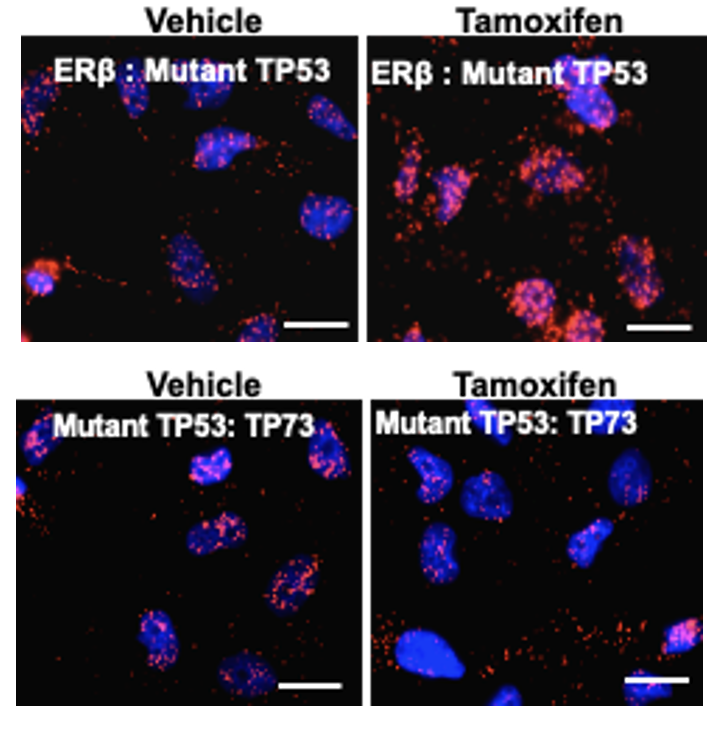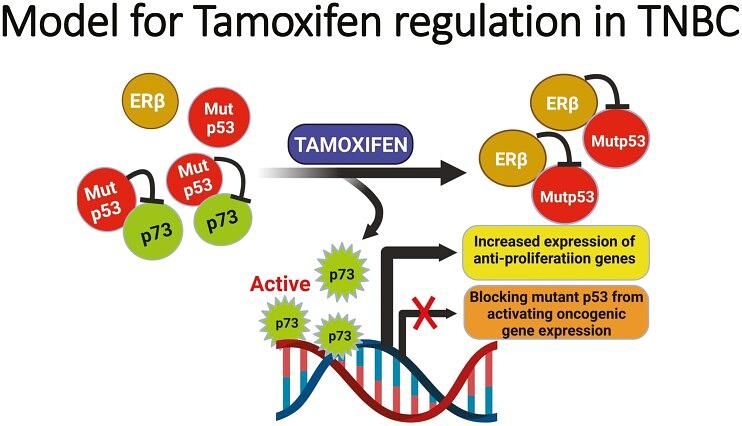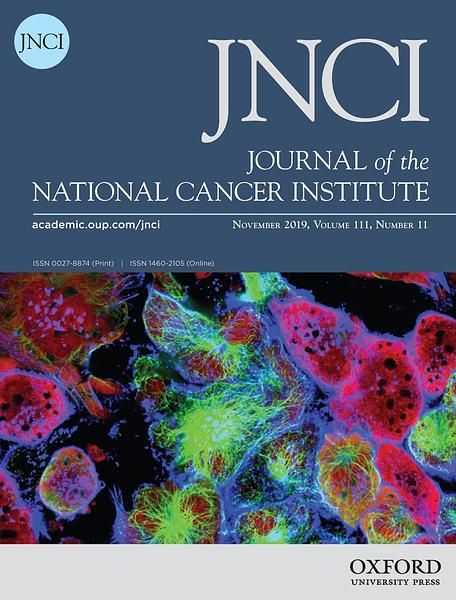New Therapeutic Strategies for TNBC
Approximately 15-20% of breast cancers are classified as triple negative breast cancer (TNBC). Because of their aggressive nature and the lack of targeted therapies, TNBCs have greater risk of relapse and metastasis resulting in shorter survival.
While immunotherapy in combination with chemotherapy is modestly effective in some patients with metastatic TNBC, a large percentage of patients are unresponsive. Furthermore, adverse side-effects from immunotherapy are of serious concern. Hence, there remains an urgent need to develop new therapeutic strategies against TNBC.
ERβ: Dualistic roles depending on p53 staus
Unlike ERαN-positive luminal breast cancer, TNBC does not express ERα; however, ERβ is generally expressed in these tumors. Furthermore, wild-type p53 (albeit functionally suppressed because of ERα binding) is expressed in the majority of ERα-positive breast tumors, whereas 80% of TNBCs harbor mutant p53. We showed that ERβ binds directly to p53.
We discovered that ERβ is functionally dualistic in breast cancer depending on the p53 context. ERβ is anti-proliferative in the context of mutant p53, whereas it is pro-proliferative in the context of wild-type p53.
Augmenting TNBC Treatment with Tamoxifen
One of the major gain-of-function oncogenic property of mutant p53 is its ability to bind and inactivate p73 tumor suppressor protein. We have shown that ERβ is capable of binding and sequestering mutant p53 resulting in reactivation of p73 (JNCI, 2019).
Importantly, tamoxifen treatment augments the ability of ERβ to sequester mutant p53 while reciprocally downregulating mutant p53-p73 interaction leading to decreased cell proliferation. This effect is further enhanced when tamoxifen is combined with chemotherapeutic agents.
Consistent with these observations, combination of tamoxifen and chemotherapy is very effective in inhibiting xenograft TNBC tumor growth in vivo. In a current TNBC patient case study, treatment with tamoxifen resulted in increase in both ERβ expression and ERβ-mutant p53 interaction associated with significant regression of brain metastases (The Oncologist, 2023).
As ERα, the canonical target of tamoxifen, is not expressed in TNBC, tamoxifen is not part of standard-of-care for TNBC patients. Findings from our laboratory have challenged this thinking. Our current working model is shown in the figure below. The findings suggest that tamoxifen could be repurposed as an efficient treatment strategy for TNBC.
ERβ and p53 Signaling Crosstalk in Other Cancers
Our lab also pursues projects on the role of signaling crosstalk between ERs and p53 in high grade serous ovarian cancer (HGSOC) and non-small cell lung cancer (NSCLC). HGSOC has molecular similarity to TNBC in that p53 is mutated in about 96% of HGSOC and they express ERβ.
We have recently reported that in HGSOC, ERβ2, an alternatively spliced isoform of ERβ, cooperates with mutant p53 to drive aggressive tumor growth and therapeutic resistance (Cancers, 2022).
Our effort to understand mechanisms underlying crosstalk between ERβ and p53 signaling could have broader biological and clinical implications as these proteins are expressed in multiple tissues and cancers.
Editorial & media coverage
- JNCI Editorial: TP53 Status and Estrogen Receptor-Beta in Triple-Negative Breast Cancer: Company Matters
- HemOncToday: ‘Important opportunity’ identified for tamoxifen in triple-negative breast cancer
- Cancer Network: Do TP53 and ESR2 Interactions Change Prognosis in Triple-Negative Breast Cancer?
- Drug Discovery Network: Disruptive double agent: Existing drug may successfully treat aggressive tumor
Contact the Das Lab
Email: Gokul.Das@RoswellPark.org
Phone: 716-845-8542
Department of Pharmacology and Therapeutics
Roswell Park Comprehensive Cancer Center
Elm and Carlton Streets
Buffalo, NY 14263


